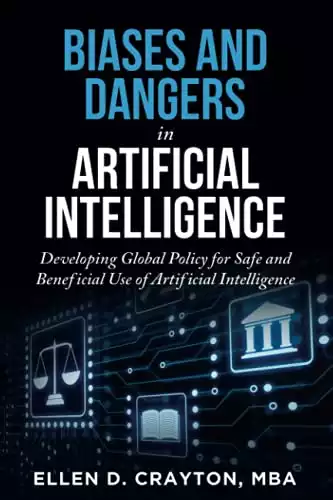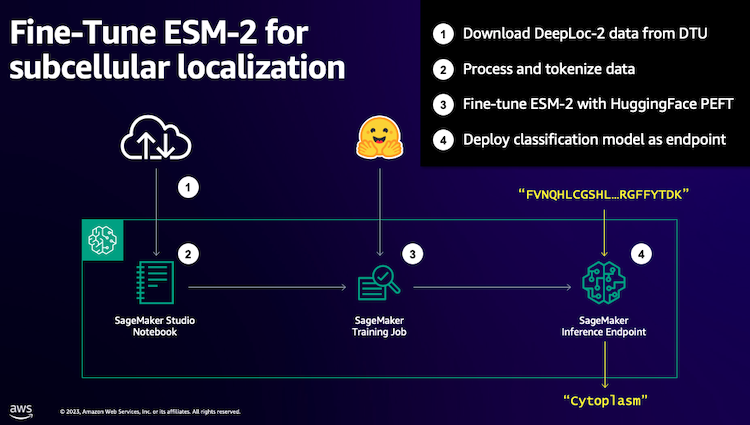Introduction – AI and Unintended Consequences
AI and unintended consequences go hand in hand. Artificial Intelligence (AI) is undeniably transformative, offering revolutionary prospects across diverse industries. Its capabilities range from simplifying mundane tasks to solving complex problems that baffle human intelligence. However, the rapid growth of machine learning and neural networks also brings a host of potential risks. From introducing bias in financial industry risk scores to potential security threats in language models, the stakes are high. The duality of AI—its ability to either enhance or impair—is precisely why it captures relentless attention.
The key to unlocking AI’s potential while mitigating its risks lies in effective risk management and stringent human oversight. Whether it’s navigating the ethical maze of autonomous vehicles or balancing customization and manipulation on social platforms, proactive governance is vital. As a business leader, understanding these far-reaching consequences is more than a responsibility—it’s an imperative. The desire here is not just to leverage AI’s capabilities but to do so in a manner that safeguards societal and individual well-being. The call to action is clear: engage in collaborative, multidisciplinary efforts to institute comprehensive guidelines and oversight mechanisms, ensuring that AI serves humanity, rather than undermines it.
Also Read: Dangers Of AI – Dependence On AI
Ethical Implications of Autonomous Decision-Making
AI systems now shoulder tasks previously reserved for human judgment, notably in finance and healthcare sectors. Algorithms are central to calculating risk scores in financial institutions, and machine learning models increasingly aid in medical diagnoses. While this shift promises efficient and potentially unbiased outcomes, it also brings critical challenges. A glaring issue is the lack of transparency in how these systems reach conclusions. This opacity can make it difficult for even experts to understand how a decision was made.
Human oversight becomes essential in this context, not just for ethical checks but also for interpreting the logic behind AI decisions. This is especially vital when algorithms produce false positives. Such errors can lead to unjust outcomes, from incorrect medical diagnoses to unfairly high financial risk scores. It’s not just about the potential errors; it’s also about the lack of understanding among human operators about why an algorithm might be wrong. Therefore, human decision-making still plays an indispensable role in scrutinizing and validating AI-generated results.
Given these complexities, business leaders, regulatory bodies, and industry stakeholders can’t afford to be passive. Proactive risk management strategies must be a top priority. These measures should include setting up comprehensive guidelines and rigorous testing protocols. Ethical considerations need constant evaluation to ensure they align with human values and societal norms. By doing so, we not only harness AI’s capabilities but also maintain a necessary layer of human oversight and ethical integrity.
Also Read: Top Dangers of AI That Are Concerning.
Algorithmic Bias and Social Injustice
AI systems, specifically machine learning models and neural networks, are susceptible to biases present in their training data. These biases can propagate social injustice in profound ways. In finance, algorithms with built-in biases can yield discriminatory risk scores. This affects not just loan eligibility but also the interest rates offered, thereby perpetuating economic inequality. Likewise, facial recognition technology, especially when used by law enforcement, isn’t always neutral. It often disproportionately misidentifies ethnic minorities, adding another layer of social inequity.
Human oversight becomes an irreplaceable component in this equation. Continual audits of these decision-making algorithms are essential to identify and correct bias. Yet, oversight isn’t just an ethical imperative; it’s also a business necessity. For business leaders and industry peers, understanding the extent of algorithmic bias is pivotal. This is not merely about acknowledging the bias but also about instituting enterprise-wide controls to actively counteract it.
Risk management must be robust and ongoing. It should include both identifying potential biases and putting safeguards in place to minimize negative outcomes. Ethical guidelines and oversight mechanisms need to be strong enough to catch and correct these biases. By taking these steps, we can ensure that AI serves to enhance human decision-making, not undermine it, and aligns with broader ethical norms and societal values.
Privacy Erosion Through Surveillance Technologies
Artificial Intelligence (AI) technologies, particularly in facial and object recognition, are core to contemporary surveillance systems. While these technologies can significantly enhance security measures, they concurrently pose a serious risk to individual privacy. In the realm of social media platforms, AI algorithms not only collect but also scrutinize extensive user data. Often, this occurs without clear consent or enough transparency, making users unwitting participants in large-scale data mining. The stakes are just as high in law enforcement, where facial recognition technologies are in use. These systems are not infallible and can yield false positives or misidentifications. Such errors can lead to unwarranted arrests or excessive surveillance, compromising individual freedoms.
The financial industry also extensively employs AI to monitor transactions, flagging unusual activities for review. While this adds a layer of security, it can also lead to an inadvertent overshare of personal data, straddling the line between protection and intrusion. Given these multi-layered challenges, human oversight becomes a non-negotiable factor. It is essential for interpreting AI decisions, setting ethical boundaries, and ensuring compliance with privacy laws. As for risk management, it is not a one-time endeavor but a continual process. Business leaders, regulatory bodies, and industry peers must establish stringent governance mechanisms and nuanced controls. These should aim to safeguard individual privacy while maximizing the benefits of these powerful technologies.
While AI holds the promise of revolutionizing security and surveillance, it also necessitates a rigorous understanding of its potential impact on privacy. This dual nature makes it crucial for decision-makers to be well-versed in the far-reaching consequences of these technologies, thereby ensuring their ethical and responsible deployment.
Job Displacement and Economic Inequality
Artificial Intelligence (AI) is radically altering the employment landscape across industries. In the financial industry, robo-advisors and automated trading platforms are diminishing the need for human analysts. Manufacturing jobs, too, are under threat from machine learning algorithms capable of intricate quality checks. Such automation amplifies economic inequality, widening the gap between high-skilled workers who can adapt and lower-skilled workers who face job displacement. Business leaders and industry peers must confront this ethical dilemma, prioritizing risk management to mitigate negative consequences.
Human oversight is essential for the responsible transition of the workforce into this new era. Comprehensive risk assessments must be conducted to understand the far-reaching societal impacts of AI in the job market. Strategies for reskilling and upskilling workers could serve as part of a broader plan to counterbalance the harmful effects of job displacement due to AI.
Also Read: Dangers of AI – Ethical Dilemmas
AI-Enabled Warfare: Ethical and Security Concerns
Artificial Intelligence (AI) is increasingly woven into the fabric of modern warfare, elevating ethical and security stakes. Advanced machine learning models drive a myriad of applications, from piloting surveillance drones to generating predictive analytics in conflict zones. These technologies promise to refine warfare, minimizing collateral damage. Yet, they also introduce profound risks, such as unintended harm. For instance, autonomous weapons systems might misinterpret a situation, leading to civilian casualties or other tragic outcomes.
The absence of human oversight in these automated war mechanisms poses an existential threat, demanding a whole new approach to risk management. Business leaders spearheading military AI projects must instill rigorous testing protocols, and thorough risk assessments must be standard practice. There’s an urgent need for robust human oversight and enterprise-wide controls that are both nuanced and stringent. Such governance structures should be in place to catch potential errors, false positives, or lapses in ethical judgement. If these factors go unaddressed, the consequences could extend beyond the immediate battle zones, destabilizing geopolitical relations and global security frameworks.
Reinforcement of Socio-Cultural Stereotypes
Artificial Intelligence (AI), particularly in the form of language models and social media algorithms, has the capacity to reinforce and perpetuate socio-cultural stereotypes. These machine learning systems often ingest vast amounts of data from the internet, which can include biased or prejudicial information. This results in algorithms that can inadvertently produce outputs reflecting these stereotypes, affecting social perceptions and even policy decisions. Such reinforcement is not just an ethical concern but also poses potential security risks, as it can lead to social division and unrest.
Business leaders and industry peers must be vigilant in identifying these biases and implementing comprehensive risk management strategies. Human oversight is essential to continually monitor and refine these algorithms. The goal is to ensure that AI technologies contribute positively to society, rather than exacerbating existing inequalities and divisions.
Manipulation of Public Opinion and Fake News
Artificial Intelligence (AI) wields considerable influence over public sentiment, notably through its engagement on social media platforms. Algorithms that power these platforms aim to boost user interaction, yet they can also disseminate fake news, posing significant risk to democratic frameworks. This isn’t merely an ethical quandary; it’s a potential threat to societal stability. Advanced natural language models can fabricate news stories indistinguishable from authentic reporting, amplifying the risks.
As a countermeasure, business leaders in the social media space must initiate robust risk management protocols. Not only is it essential to flag and neutralize false information, but human oversight should also work in tandem with enterprise-wide controls to scrutinize content. AI’s rapid growth intensifies the need for such checks and balances, making them not just advisable but indispensable. The objective isn’t just to contain misinformation but to foster an environment where accurate information prevails.
Further complicating this are the nuanced controls that must govern AI’s instrumental goal: keeping users engaged while not compromising on factual integrity. Rigorous testing should be a baseline requirement, both for AI algorithms and the human decision-making processes that oversee them. Social networks can play a pivotal role in this, serving as both a source of misinformation and a potential solution. Given AI’s powerful technologies and the harm to humans it can inadvertently cause, the margin for error is incredibly slim. Thus, business leaders must remain vigilant and proactive in implementing strategies that minimize potential errors and reduce the overall risk profile.
Cybersecurity Threats from Advanced AI Systems
Artificial Intelligence (AI) technologies, such as machine learning and neural networks, offer advanced capabilities for cybersecurity but also introduce potential security risks. Sophisticated machine-learning models can be employed by hackers to automate and optimize attacks, requiring financial institutions to be vigilant. Risk management becomes paramount as business leaders grapple with these challenges. Enterprise-wide controls and proper oversight are critical for assessing AI’s potential threat landscape.
Financial industry leaders must balance the benefits of AI against its inherent risks, maintaining a calibrated risk score that considers the far-reaching consequences of AI breaches. Enhanced human oversight is essential to ensure that AI tools are used responsibly and effectively in cybersecurity measures. The rapid growth of AI’s capabilities in this sector makes the stakes increasingly high, necessitating constant adaptation and vigilance to mitigate unintended harm.
Data Monopoly and the Curtailment of Innovation
Artificial Intelligence (AI) feeds on vast amounts of data, creating an environment where a few key players like Google and Facebook can monopolize this vital resource. This data centralization blocks smaller competitors from accessing valuable, expansive datasets, hindering the growth of innovative machine learning models and neural networks. As a direct response, business leaders and financial institutions must prioritize risk management strategies to navigate this skewed landscape. The situation begs for regulatory oversight to democratize data access and stimulate competition.
Apart from stifling innovation, data monopolies also create towering barriers for startups and medium-sized businesses trying to break into the market. In such a scenario, the financial industry, in particular, finds itself at a crossroads where risk assessments become indispensable. The concentration of data can also lead to power imbalances, where major players can influence market trends, customer preferences, and even regulatory norms to their advantage.
Human oversight becomes a non-negotiable aspect of this complex ecosystem. The need for robust regulatory frameworks cannot be overstated, especially when the stakes involve not just economic health but also social equity. Businesses that lack the muscle to compete with data giants risk obsolescence, thereby thinning market diversity. Given the challenges and the potential for long-term harm, adopting rigorous testing protocols and governance practices is not optional; it’s imperative. By instituting these checks, we can aim for a more equitable distribution of resources, fostering an environment ripe for innovation and competition.
The burgeoning expansion of Artificial Intelligence (AI) carries a seldom-highlighted ecological toll. The immense computational power needed to train machine learning models and neural networks translates into escalating energy use and a growing carbon footprint. This environmental impact gains prominence as AI applications proliferate across sectors such as finance and healthcare. To mitigate this, business leaders have a pressing need to weave ecological considerations into their overarching risk management strategies. Approaches may include energy-efficient algorithms, data center optimizations, and transitions to renewable energy sources.
Human oversight plays a pivotal role in guiding the industry toward sustainability. Overlooking these environmental issues opens the door to substantial risks: the dual threat of ecological degradation and impending regulatory sanctions. Companies must not only address immediate operational concerns but also anticipate potential regulatory landscapes that could impose new standards for sustainability. Therefore, proactive governance is essential to avert far-reaching negative outcomes, whether they are ecological or regulatory in nature. Failure to act jeopardizes both the planet’s health and the corporate social responsibility standing of businesses in the public eye.
Dehumanization and Loss of Personal Connection
As artificial intelligence (AI) continues to advance, the increasing reliance on algorithms can contribute to dehumanization and a loss of personal connection. Intelligence in machines often eclipses the value placed on human intelligence, especially in sectors like healthcare and finance. This trend poses a dilemma: while AI may offer efficiency, the lack of understanding it has for human nuances and emotions is problematic.
The delegation of decision-making to AI can result in an erosion of human decision-making skills. People may become overly dependent on algorithms, diminishing their own capacity for critical thought and emotional connection. Business leaders must be vigilant in acknowledging these risks, incorporating them into broader risk management strategies. Human oversight and ethical guidelines are imperative to maintain a balance between technological efficiency and the preservation of human qualities in decision-making processes.
Erosion of Professional Expertise and Human Judgment
Artificial intelligence (AI) is becoming deeply embedded in professional landscapes, from healthcare to finance. Its growing role in the decision-making process threatens to overshadow the importance of human judgment. These powerful technologies promise efficiency and accuracy but often lack nuanced controls that consider context and complexity. While their instrumental goal may be to automate tasks, the educational goal of nurturing professional expertise should not be neglected.
Potential errors, facilitated by inadequate or biased algorithms, could lead to significant harm to humans. Rigorous testing and validation of AI systems are imperative. Business leaders must incorporate these complexities into their risk management frameworks. Social networks within professional communities can act as a counterbalance, sharing insights and best practices for integrating AI responsibly.
Also Read: AI: What should the C-suite know?
Ethical Quandaries in Medical AI Applications
The allure of Artificial Intelligence (AI) in healthcare is akin to the golden touch of Midas—promising yet fraught with peril. As the industry adopts AI for diagnosis and treatment, the focus often tilts toward the transformative potential, overlooking critical hazards. High error rates in expansive machine learning models, for example, pose acute risks. Misdiagnoses or flawed treatments emanating from these errors risk patient well-being and erode trust in healthcare institutions. These ramifications are starkly significant for multicellular life, especially human beings.
Given this high-stakes environment, the need for rigorous oversight becomes unequivocal. Establishing comprehensive ethical guidelines is non-negotiable for governing AI applications in healthcare settings. Concurrently, educating clinical practitioners about the nuances of AI becomes imperative. This dual focus ensures that human expertise maintains its central role in patient care, serving as a nuanced control against AI’s potential errors. Preemptive measures also involve the integration of robust risk management protocols, encompassing rigorous testing and validation procedures. Such a multi-pronged approach fortifies the healthcare system against the potential harm to humans, even as it capitalizes on AI’s powerful technologies to elevate care standards.
Example of Unintended Consequences In Medial Application
Pursuing the fastest way to cure cancer might tempt researchers to employ radical methods, leveraging Artificial Intelligence (AI) and Machine Learning (ML) for expedited results. Imagine injecting a large population with cancer, then deploying various AI-driven treatments to identify the most effective cure. While this approach might yield a rapid solution, it exacts an intolerable ethical and human cost: the loss of lives due to experimental treatments. These casualties serve as unintended consequences, initially obscured but ultimately undeniable.
The scenario illustrates the complex ethical terrain that often accompanies AI and ML applications in healthcare. Although the instrumental goal might be laudable, the potential for harm to humans remains significant. This calls for rigorous testing protocols and ethical considerations, integrated from the project’s inception. Business leaders and medical professionals must exercise nuanced controls and perform diligent risk assessments. Human oversight is crucial throughout the decision-making process to prevent or mitigate devastating outcomes. Thus, in the quest for powerful technologies to solve pressing health issues, the preservation of human life and dignity must remain paramount.
Diminishing Human Accountability in Automated Systems
As artificial intelligence (AI) gains prominence in automating intricate tasks, the issue of diminishing human accountability comes to the fore. When AI systems handle critical decision-making, pinpointing responsibility for mistakes or ethical violations becomes increasingly murky. This lack of clarity can foster ethical lapses and dilute governance structures, undermining the integrity of businesses and institutions. Rigorous oversight and transparent guidelines are essential to delineate clear zones of human accountability, reducing the potential for error and misconduct.
To manage these challenges, businesses and regulatory bodies should invest in robust oversight measures. This involves crafting enforceable guidelines that clearly allocate responsibility when AI systems are in play. Particular attention must be given to defining the roles humans and machines will occupy, ensuring a harmonious and accountable collaborative environment. By doing so, companies can navigate the complexities of AI adoption while maintaining strong governance structures.
In addition to governance, professional training programs must adapt to this new reality. The workforce should be skilled not just in AI technology but also in ethical considerations and accountability metrics that AI introduces. This educational goal ensures that even as machines take on more roles, human oversight and accountability remain at the core of all operations. Through these multidimensional approaches, we can strike a balance between technological innovation and human responsibility.
Existential Risks: The “Control Problem” and Superintelligent AI
The notion of creating superintelligent AI generates profound existential risks. The central issue, often referred to as the “control problem,” revolves around the development of AI systems that not only exceed human intelligence but also remain within safe and ethical bounds. As we approach the threshold of superintelligence, the stakes grow exponentially higher.
Even a minor oversight in the system’s programming could lead to catastrophic outcomes, ranging from ethical violations to existential threats against humanity. Therefore, a multidisciplinary approach is imperative. Researchers, ethicists, and policymakers must collaborate to establish rigorous safeguards and governance structures. These precautions are designed to preemptively address the control problem, ensuring that as AI systems become more advanced, they remain aligned with human values and controllable mechanisms.
Also Read: The Rise of Intelligent Machines: Exploring the Boundless Potential of AI
Conclusion
Navigating the challenges and opportunities of artificial intelligence (AI) requires a multidisciplinary, collaborative approach. The range of potential risks is extensive, spanning ethical considerations, social impact, and even existential threats. These challenges are not isolated but interconnected, requiring comprehensive solutions. Policymakers, researchers, and industry peers must work in tandem to formulate effective risk management strategies. This collaborative effort should extend beyond mere technological innovation to include ethical, societal, and regulatory considerations.
By fostering a culture of proper oversight, transparency, and ethical deliberation, we can ensure that AI serves as a force for good. The objective is to maximize the benefits of AI while minimizing its negative consequences, keeping humanity’s best interests at the forefront as we move into an increasingly automated future.
References
Müller, Vincent C. Risks of Artificial Intelligence. CRC Press, 2016.
O’Neil, Cathy. Weapons of Math Destruction: How Big Data Increases Inequality and Threatens Democracy. Crown Publishing Group (NY), 2016.
Wilks, Yorick A. Artificial Intelligence: Modern Magic or Dangerous Future?, The Illustrated Edition. MIT Press, 2023.
Hunt, Tamlyn. “Here’s Why AI May Be Extremely Dangerous—Whether It’s Conscious or Not.” Scientific American, 25 May 2023, https://www.scientificamerican.com/article/heres-why-ai-may-be-extremely-dangerous-whether-its-conscious-or-not/. Accessed 29 Aug. 2023.




